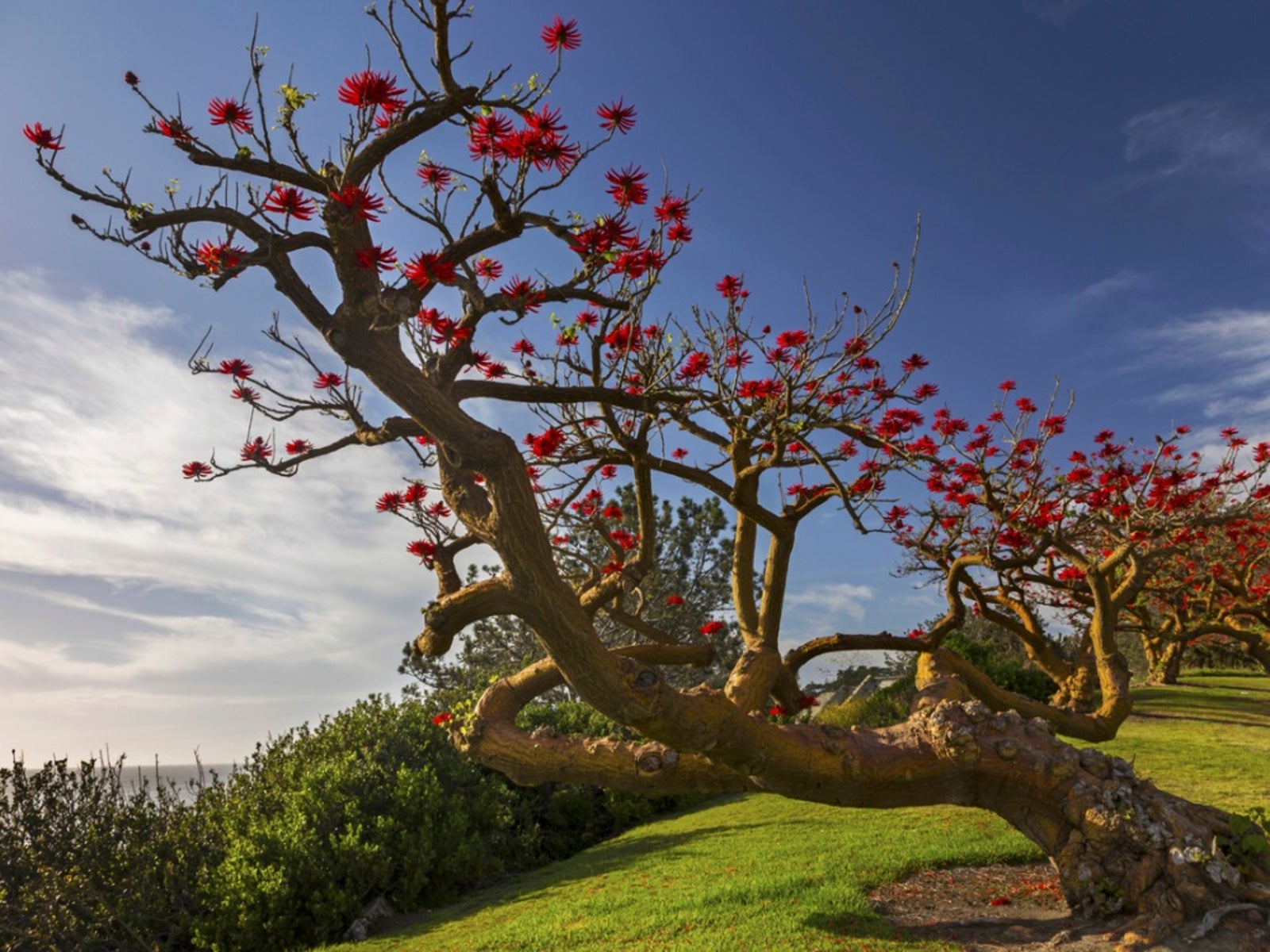Coral Tree Information: Learn About Growing Coral Trees


Exotic plants like the coral tree lend unique interest to the warm region landscape. What is a coral tree? The coral tree is an amazing tropical plant that is a member of the legume family, Fabaceae. It may be spiny or smooth, deciduous or evergreen, with a spectacle of a flower in brilliant pink, red, or orange hues. Growing coral trees is only appropriate outdoors in USDA zones 9 and up. Coral tree care is easy if you are in the correct region, but some growers may find them messy. Find out how to grow coral trees and add some of their intense beauty to your garden.
What is a Coral Tree?
Coral trees are members of the genus Erythrina and are primarily found in South Africa and South America. There are approximately 112 different species of Erythrina around the world. They are also found in Mexico, Central America, the West Indies, Asia, Australia, and even Hawaii. The wide area covered by the plants seems to indicate the coastal dispersal of seeds. Some interesting coral tree information regards their extremely buoyant seeds, which have the ability to float for up to one year and are so hard they pass unharmed through animal and bird digestive tracts. These tough seeds wind up tossed from the surf on fertile tropical soils where they take off and eventually adapt and evolve to take advantage of their environment.
Coral Tree Information
The average height of a coral tree is 35 to 45 feet (10.5-13.5 m.) tall, but some varieties exceed 60 feet (18.5 m.) in height. The leaves have three distinct leaflets, and the stems may have thorns or may be smooth, depending upon their evolutionary adaptations. The trees have thick trunks, usually with several smaller trunks joining the main stem. Roots push out of the ground as they age and may become a hazard. The bark is a thin grayish brown, and the wood is pithy and weak, prone to breaking in the wind or due to overwatering. The flowers are the standout, appearing in late winter. They are outlandish constructions of thick, bright petals standing erect around the corolla. Hummingbirds are extremely attracted to the loud colors and striking scent.
Coral Tree Care
Coral trees need very little water. Too much water actually promotes a weak limb structure and subsequent breakage. Overwatering causes the tree to grow too quickly, and its soft wood cannot support such spurts. Then in the dry season, the weight of the tree can actually pull it out of the soil. Pruning the tree in spring to remove the heavier stems or any damaged material will help prevent limb loss and trees from tipping. Fertilizer is also not recommended when growing coral trees. Fertilizer also causes them to have aggressive growth that can cause problems later. Cover over the root zone with a good organic mulch, which will gradually leach a light dose of nutrients into the soil over time.
Sign up for the Gardening Know How newsletter today and receive a free copy of our e-book "How to Grow Delicious Tomatoes".

Bonnie Grant is a professional landscaper with a Certification in Urban Gardening. She has been gardening and writing for 15 years. A former professional chef, she has a passion for edible landscaping.